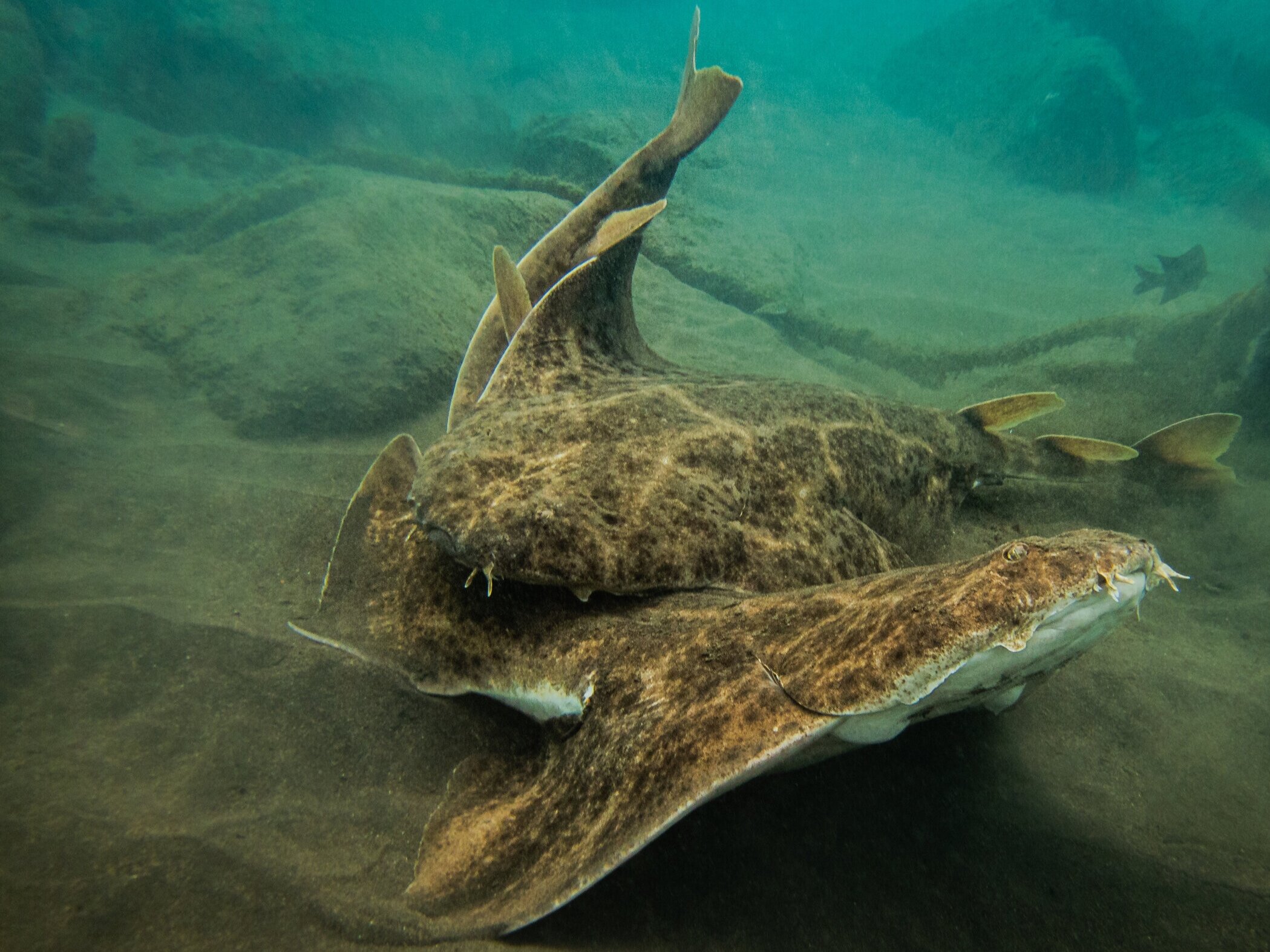Liam McGuire from Innoceana shares his experience working off Tenerife
Diving as part my work in Tenerife during this difficult year has been a rollercoaster of emotions. One of the many highs was during what I expected to be a typical survey dive in the seagrass. Entering by the shore, we began by swimming at a depth of six meters towards the seagrass patch. There I was greeted by my first Angel Shark (Squatina squatina). The one-and-half-metre shark swam within inches of me as I captured the ticking movement of its tail, powering over the sand.
Witnessing this critically endangered shark in the wild was a very special moment. With an uncomfortable amount of remaining air from keeping up with the shark, I completed the necessary 3D model of the seagrass patch. Leaving the water with a big smile on my face, I didn’t expect it to be the start of my very own shark week.
The very next day I jumped out of my skin during a night dive when checking the dive computer on my wrist using my single light source. I looked down to see an Angel Shark of similar size swim right under my elbow, following it with my light for a few seconds before it disappeared into the night. These frequent sightings in Tenerife, it turned out, were due to mating season.
Swimming in the local port a few days later with my colleagues at the non-profit Innoceana, we saw another, slightly smaller shark gliding around the area. We followed it to another two individuals and stayed with them for a long time, taking photos for seasonal identification. Then they began mating. Their aggressive display was enough for us to keep our distance! Seeing so many of these rare sharks first-hand has increased our drive to help the populations in Tenerife thrive.
The Angel Shark (Squatina squatina) once ranged from Scandinavia to northwest Africa, including the Mediterranean and the Black Sea. The species is a benthic predator, often lying on the seabed for long periods of time waiting for prey. Though not particularly sought after by fisheries, the Angel Shark is vulnerable to by-catch in benthic trawl fisheries. This has led to the species being functionally extinct in the North Sea. Due to the combination of coastal development, degradation of habitat and population fragmentation the species is now designated Critically Endangered on the IUCN Red List.
The Canary Islands, where I am based, are one of the only places in the world where the shark is regularly sighted during their winter breeding season. My work with the Marine Conservation Non-Profit Innoceana is aiming to ensure that the habitats of many species, such as the Angel Shark, are protected for future generations in Tenerife.
Currently our main project within the Marine Protected Areas of Tenerife is to assess the health of seagrass and provide evidence of their distribution, to better understand how to conserve these vital ecosystems for this part of the world. Combining my background in marine science and photography, I am striving to educate people on the life on their doorstep and how they can be directly involved in both its destruction and recovery.
See more of Liam’s photos and follow him @liam.mcguire.photography
https://www.linkedin.com/in/liam-mcguire-849668b1/?originalSubdomain=uk
https://innoceana.org
@liam.mcguire.photography


